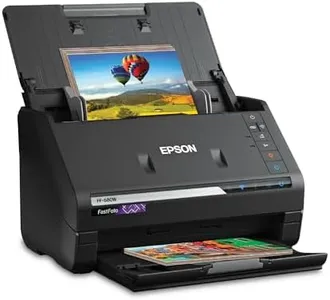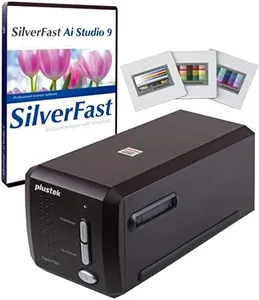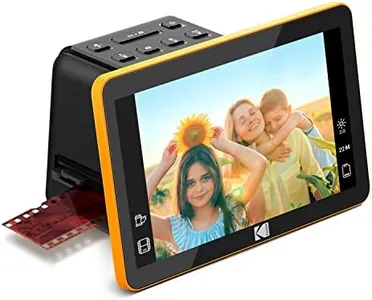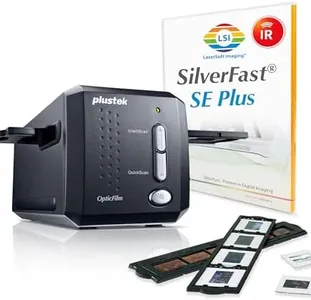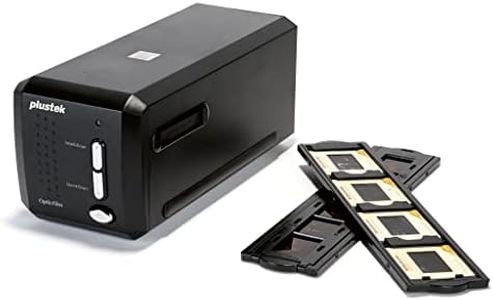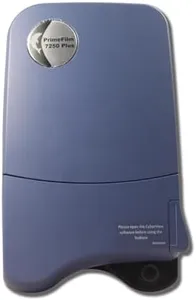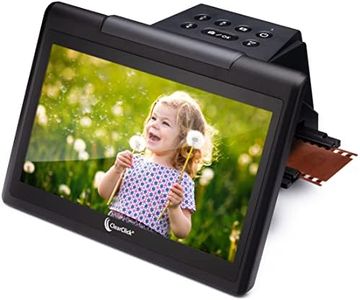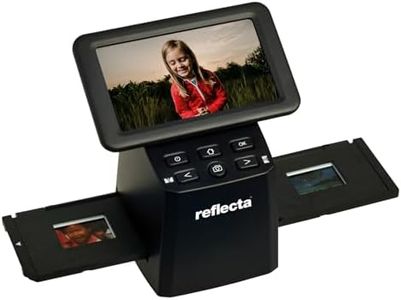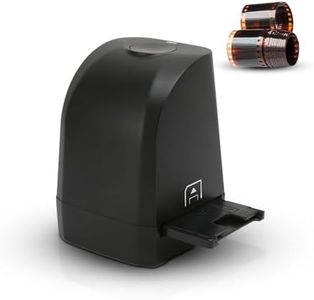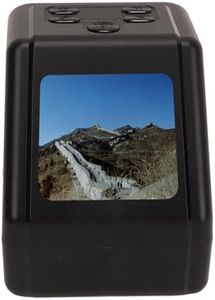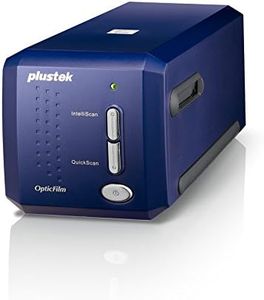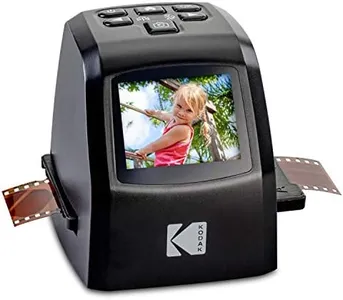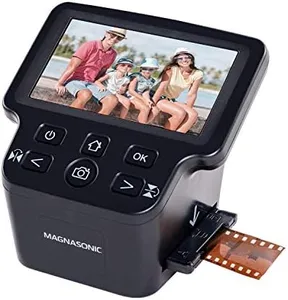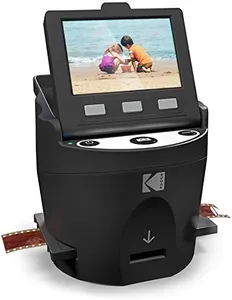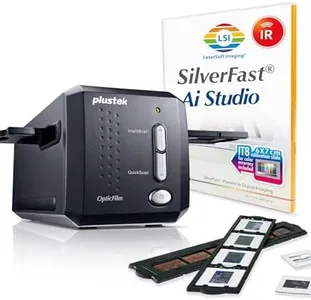We Use CookiesWe use cookies to enhance the security, performance,
functionality and for analytical and promotional activities. By continuing to browse this site you
are agreeing to our privacy policy
10 Best Negative Film Scanners
From leading brands and best sellers available on the web.Buying Guide for the Best Negative Film Scanners
Choosing a negative film scanner can be a rewarding process, especially if you want to digitize your old film memories and preserve them for the future. When picking the best scanner for your needs, it’s important to understand the main features that influence image quality, speed, and ease of use. Your decision should be shaped by how often you plan to scan, the quality you expect, and whether you value convenience or want more control over the scanning process.Resolution (DPI)Resolution, measured in DPI (dots per inch), tells you how much detail the scanner can extract from your negatives. Higher DPI means the scanner can capture more information, leading to sharper and more detailed digital images. For basic scanning and sharing online, 2400-3200 DPI is usually enough, but if you want to make large prints or archive your images, look for scanners with 4000 DPI or higher. Think about how you plan to use your scans: for social media, low to mid-range DPI is fine; for printing or editing, opt for high DPI.
Color DepthColor depth refers to how many shades and colors the scanner can capture from your negatives, often measured in bits. Higher color depth (like 48-bit) helps the scanner pick up subtle color variations and smooth transitions, which is important for film where color tones are unique. If you just want casual scans, standard color depth is sufficient, but for editing or preserving more details in highlights and shadows, go for higher color depth.
Film CompatibilityNot all scanners handle the same types of film. Some are designed for 35mm negatives only, while others can scan medium format or even larger negatives. Check what film types you’ll be scanning most frequently. If you only have 35mm film, a basic scanner will do, but for medium format or slide film, ensure your chosen scanner supports those sizes. Align the scanner’s compatibility with your film collection.
SpeedScanning speed is how long it takes the machine to digitize a single frame. Faster scanners are convenient if you have a big collection to go through, while slower scanners often offer higher quality or more control. Decide whether you need speed for large projects or if patience for better quality is worth it for you.
Software and FeaturesFilm scanners usually come with their own software for handling image corrections (like color restoration or dust removal). Good software can make scanning much easier and improve the quality of your scans. Check that the scanner’s software is compatible with your computer and offers the features you care about. If you are not tech-savvy, look for user-friendly software with automatic correction options.
ConnectivityConnectivity refers to how you connect the scanner to your computer, with most using USB ports, though some modern options offer wireless connections. Ensure that the scanner you choose can easily connect to your computer or device so you won’t struggle to access your scans. Consider the devices and systems you’ll use most, and pick accordingly.
Physical Size and Build QualityThe size and sturdiness of the scanner can affect how easily you can use and store it. Compact models are portable and simple to set up, while larger, heavier scanners are better suited for a dedicated workspace and might offer more stability or quality. Choose based on your available space and whether you’ll move the scanner around.
